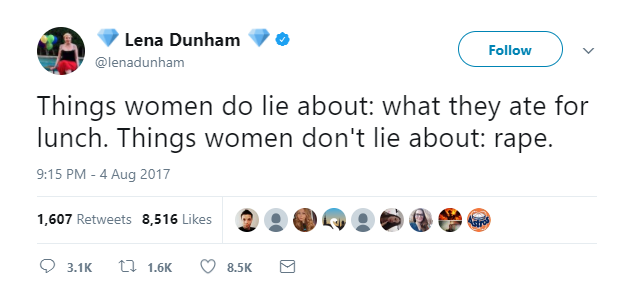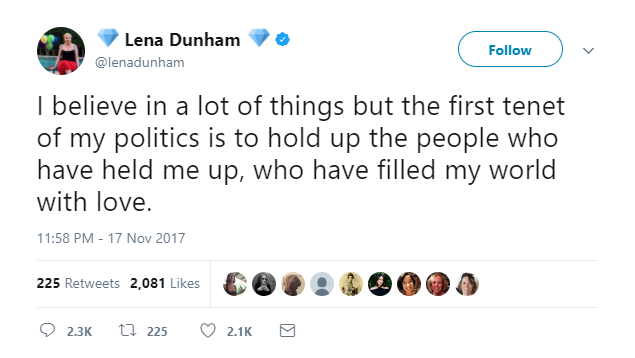There is a major trigger warning on this post for profane language, and descriptions of and allusions to sexual and physical assault – something publishers and academic institutions that set books like this should also fucking provide.
Sheila Heti’s How Should A Person Be:
Why would you write this?
No, seriously, why would someone write this book? I understand that some people like to pretend to themselves that they’re James Joyce^ and they’re being so incredibly revolutionary by shocking their audience with *gasp* graphic descriptions of blowjobs, but this is disgusting.
An excerpt from pages 243-245 of HSAPB:
As I slept that night I saw a room on the twelfth floor of a building with a courtyard in the centre, and in this building lived young people and social workers, educators, lots of people. And into a room at the top there came deliveries of sharp, long knives, short knives, twisted knives, all sorts of knives, guns, ropes, and huge shipments of drugs. Razors were sent there, picks, files, cuffs, scissors, things to pull with, things to clamp with, and chains, everything like that, so that no one who saw the shipment and loved their sister could leave her there in that room with those boys, and yet someone did. Lots of people did. One person took the elevator down and told the social workers, "I'm scared. I think something might happen to my sister! I think something might be going on in that room!" But the social workers did not understand; one said she was going to go up, but she was not as scared as the person who left her sister, who just stood there pacing, beyond worrying, so certain, on the main floor in the center of that courtyard. Because it would now be too late. The social worker went up, but it was too late because more boys had gone up with all their frightening clothes on, all their paint, all the things they dressed in regularly to scare people. They went up, and the room got more and more crowded with people who thought they should take part in the orgy because why not join in for once? Why always remain aloof? Why not join in and stick the things, the metal bars, into the mouths? They wanted to have a good time. The room was small, but it held all the women you could think of and all the men you were ever scared of in your whole life, passing on the street or just imagining, and all the men you loved the most. That is when the party started. So many of these people were crowding in from the elevator that the social worker could hardly make her way into the room, and she never did make her way into the room, but came back with a pale face, her hair frizzed with fear from not being let into this room with all the tools and all the drugs, and that is where the orgy began. That is where it began in no innocence at all, but compared to what was to come, it began in innocence. There were knives and girls skinned alive and kept alive, and one woman screaming but trying to laugh it off to another, "Look what they did to my face!" - and there were the amputations performed right there, the limbs cut off, and the bars fucked with in the mouth, and all the things that can be done to a person including the pulling and ripping of everything that we don't even know we love about a person - their intactness, their perfect intactness - and all the things that seem to us the person - they were destroyed, ripped away, so that you could not tell one girl from the other except some were taller, some were thinner, but you could not see it in the face, just bloodiness, like animals turned inside out. And in the courtyard, and in the balconies surrounding all twelve floors of the courtyard was the whole audience; rowdy, unhappy guys who were waving their flags and watching and waiting, so that at every floor they had their paint - orange, yellow, purple, blue - and when they were done with the girls, and when they were still doing them, doing everything before they dropped each girl, one by one, to her terror, thrown from the room, twelve floors down to the concrete floor of the courtyard, blood falling off her body as she fell - no skin, no face, but kept alive - then from the balconies came the colours flung, and she would fall through eleven floors of thick paint, house paint and wall paint, burning at her skin that was no longer skin - a nice bright green, a happy yellow, orange, purple, red, a rainbow. (Sheila Heti, How Should A Person Be? (Vintage: London, 2013), pp. 243-245.)
I get that this can be viewed as a metaphor for the internet, and society’s wilful ignorance towards the depravity that exists there and what it potentially inspires. I get that it’s potentially highlighting the fact that women are often only valued as someone’s sister/mother/aunt/daughter/wife, when we’re actually people separate from our relationship to a man. Or that the ‘blame’ for assault is often a strangely detached and disembodied entity. Or that men are ‘boys’ in the passage a lot of the time and are infantilised and it’s their parents/ society/ social conditioning’s fault that they act like they do and they’re separated from responsibility. And that their ‘clothes’ they wear ‘to scare people’ are them performing this role. I can do the academic assessment of it, I am just refusing to centre this post about that.
I also see that it’s arguably critiquing society through the microcosm of the building in which everyone knows what goes on, but no-one, even those employed to do so (the social workers), does anything about it- as unfortunately often happens in real life. The bystander effect. “There’s nothing I can do”. But just with Sansa’s rape in Game of Thrones, the horrifically graphic suicide scene in Thirteen Reasons Why, and the needlessly triggering documentation of anorexia in To The Bone, this scene is fucking unnecessarily graphic, triggering, and fucked up. I don’t care what point you were trying to make, Sheila Heti, or what I can ‘read it’ as, you do not need to add to the mutilation and assault on womens’ bodies that happens for sport in the world already by writing this scene.
The thing that added to the sting of reading this kind of exploitative ‘artwork’ was the fact that Sheila Heti is friends with Lena Dunham, and has had Margaret Atwood write a blurb for this particular text. Both Lena Dunham and Margaret Atwood have explicitly denounced and attempted to discredit women who have spoken out about assaults that they have suffered. Lena Dunham in particular has made some appalling comments over the years (some of which are documented below), and Heti counts her as a friend whilst profiting from womens’ pain in the work quoted above. Here is a tweet of Dunham’s, supporting white women who spoke out about abuse:

Ignoring for a moment the potential subtext beneath the idea of women lying about what they eat for lunch and the perpetuation of eating disorders, this is supportive. Of white women. When a young woman of colour, Aurora Perrineau, spoke out, detailing how a writer for Girls (Lena Dunham’s almost-entirely-white, only-accessible-to-those-who-can-pay-for-access-to-it American ‘sitcom’), Murray Miller, had assaulted her when she was 17 and he was 35, Dunham ‘responded’ by attributing her accusation to ‘the 3 percent of assault cases that are misreported every year’. She later tweeted:

Margaret Atwood also signed an ‘open letter’ to the University of British Columbia that ‘concerns the firing of former UBC Creative Writing chair and best-selling writer Steven Galloway who has been accused by multiple female students of sexual assault and sexual harassment.’. This quote has been taken from an article on jezebel.com, linked below. In the letter, all co-signatories called the accusations ‘unsubstantiated and unexamined’, adding that the university ‘amplified’ claims against Galloway, ‘severely damaging Professor Galloway’s reputation and affecting his health. The University has not, however, made any allegations public, citing privacy concerns. No criminal charges were laid against Professor Galloway at the time. None has been laid since.’. The letter has been criticised for seeming to place Galloway’s well-being and career before the well-being of the women assaulted – a criticism with which I agree. Too many times have we heard that allegations of assault are damaging to men’s careers, and that women should “think twice” before reporting a man because it could ruin his life. What of the effects upon the person who experienced the assault?
This year has seen many women speaking out about trauma that they have suffered at the hands of high-profile individuals, and I fully support all of these women in seeking justice. I do not support anything that hurts survivors’ recoveries, nor anything that takes some kind of perverse schadenfreude in detailing horrors. What do passages, books, or people like this contribute?
There is no separating the artist from their art. An artist’s connections and personal morals matter when deciding whose work to support. The list of people whose work I do not associate myself with grows longer, but the list of individuals whose contribution to their respective field has been damaged by trauma, and whose healing I hope for and empathise with is longer yet. I stand alongside them to prevent its further growth. #MeToo, and no more.
Helplines:
UK:
- Rape Crisis: Freephone 0808 802 9999 : 12 noon – 2.30pm and 7 – 9.30pm every day of the year. https://rapecrisis.org.uk/
- Freephone 24 hour National Domestic Violence Helpline: 0808 2000 247
- Refuge: The Freephone 24-hour National Domestic Violence Helpline: 0808 2000 247 helps women find spaces in refuges across the UK. The police and social services can also put you in touch with us.
- Safeline: Support for men, women and young people affected by rape and abuse. (Opening hours for both helplines Monday, Wednesday & Friday 10am – 4pm, Tuesday & Thursday 8am – 8pm , Saturday 10am – 12 noon)
- Men specifically: 6Million Men Helpline: 0808 800 5005
- Everyone: Helpline: 0808 800 5008
USA:
- RAINN National Sexual Assault Hotline: 24 hours a day: 1-800-656-HOPE
- National Domestic Violence Hotline: 1-800-799-SAFE (7233)
- National Teen Dating Abuse Helpline: 1-866-331-9474
- Anti-Violence Project for LGBTQIA+ and HIV+ persons: 212-714-1141
Australia:
- National Sexual Assault, Family & Domestic Violence Counselling Service: 1800RESPECT
- Kids Help Line:
- Freecall: 1800 551 800
- National 24 Hour telephone counselling for children and young people
New Zealand:
- Shine/Te Kakano Tumanako: FREE Confidential Domestic Abuse Helpline 0508 744 633
WEBSITE LISTING HELPLINES AND ORGANISATIONS FOR EVERY COUNTRY: http://www.hotpeachpages.net/a/countries.html
^ Note: I do not like James Joyce, nor do I personally think that he was revolutionary.
Some potential links for further reading:
Guardian digested read of How Should A Person Be?: https://www.theguardian.com/books/2013/jan/27/how-should-person-sheila-heti-digested
A Guardian review of How Should A Person Be?: https://www.theguardian.com/books/2013/jan/11/sheila-heti-how-should-person-be
A New York Times review of How Should A Person Be?: http://www.nytimes.com/2012/07/08/books/review/how-should-a-person-be-by-sheila-heti.html
Goodreads reviews of How Should A Person Be?: https://www.goodreads.com/book/show/9361377-how-should-a-person-be
Lena Dunham in the media: notable events in reverse chronological order. (CONTENT WARNING: sexual abuse, (?) false accusations, (?) animal abuse, abortion):
- https://thegrapevine.theroot.com/lena-dunham-is-trash-1820565772
- http://www.nydailynews.com/news/national/lena-dunham-defends-girls-writer-accused-raping-17-year-old-article-1.3641070
- http://www.independent.co.uk/voices/aurora-perrineau-lena-dunham-rape-murray-miller-a8062551.html
- Article written by Dunham: https://www.nytimes.com/2017/10/09/opinion/harvey-weinstein-lena-dunham-silence-.html
- https://www.washingtonpost.com/news/morning-mix/wp/2017/07/07/did-lena-dunham-invent-story-of-her-abused-dog-lamby-animal-shelter-says-yes/?utm_term=.9c79bf88a8eb
- Male perspective on Dunham’s ‘character’: https://www.forbes.com/sites/danidiplacido/2016/09/05/lena-dunham-is-a-monster-of-our-own-creation/#741cfd0b6bf4
- http://www.refinery29.uk/2016/12/133714/lena-dunham-i-wish-i-had-an-abortion-stigma-quote
- https://www.theguardian.com/books/2014/nov/05/lena-dunham-statement-abuse-claims
Margaret Atwood’s signing of an ‘open letter’ to the University of British Columbia (amongst numerous other writers):